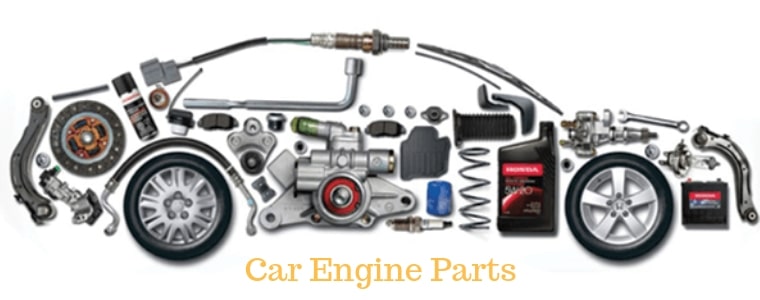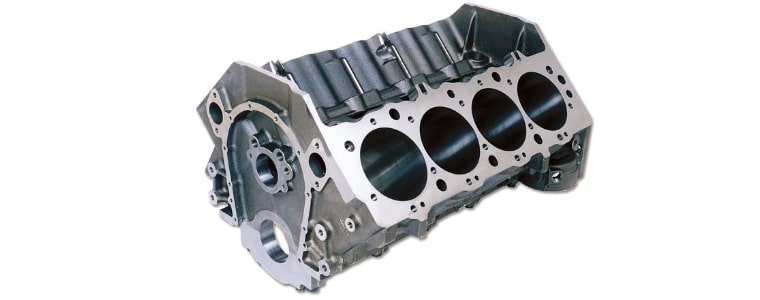The subject of this article is the car engine parts and functions. Motor vehicles are the machines which are formed by many parts and systems. There are dozens of pieces and hundreds of pieces in a car.
We can examine the basic mechanical motor parts in two parts as;
- Fixed Engine Parts
- Moving Engine Parts
Apart from these basic parts, there are additional equipment and systems in the engine.
You can also read the functions of these systems and the components connected to the system.
Fixed Engine Parts
- Carburetor
- Manifolds
- Valve Cover
- Cylinder Block
- Sump
- Air filter
- Radiator
- Inlet Manifold
- Exhaust Manifold
Moving Engine Parts:
- Pistons
- Crankshaft
- Water Pump (Recirculation)
- Charger (alternator)
- Camshaft (camshaft)
- Flywheel
- Cam Shaft
- Oil Pump
- Gas pump
- Distributors
- Valves
Briefly explain the functions of these parts;
CYLINDER (ENGINE BLOCK)
The functions of the engine block: It forms the main body of the engine. In addition to components such as cylinders, crankshaft, camshaft, oil pump, fuel system components, distributor, oil filter, charging engine and starter motor elements. Motor is connected to the chassis with the help of motor mounts.
CYLINDER HEAD
Closes the cylinder block to form combustion chambers. On it, the spark plugs carry the injectors and valve mechanism in diesel engines. There are water channels around the combustion rooms.
ENGINE CRANKCASE
It is the sheet metal protecting the motor by closing the bottom of the cylinder block. Stored in engine oil.
RADIATOR
Water-cooled engines store in cooling water. This system helps to cool the heated water.
CARBURETTER
The carburetor is the element that mixes the mixture of gasoline and air into the steam at a rate of about 1/15 (gasoline/air) according to different conditions. It is located on the inlet monifold.
AIR FILTER
It is the part that cleans the air to be taken from outside to the engine.
MANIFOLDS
There are two types as inlet and exhaust. The inlet manifold distributes the gasoline air mixture mixed in the carburetor into the cylinders. The exhaust monifold collects the exhaust gases that occur at the end of the combustion. Collects the burned gases from the exhaust pipe into the atmosphere.
OIL FILTER
It is the oil cleaning element that circulates inside the engine.
SPARK COIL
It increases the current coming from the accumulator up to 18-25 thousand volts.
SPARK-PLUG
Gasoline compressed into the combustion chamber is the part that fires the air mixture.
CHARGER
It is the element that converts the mechanical energy into electrical energy and also meets the electricity needs as long as the engine is running.
CONJECTOR (REGULATOR)
The task of the connector is to adjust the current and voltage generated by the charger.
CRANKSHAFT
It converts the vertical movement coming from the pistons through the piston rods to the circular rotation movement.
CRANKSHAFT PULLEY
This tool rotates the belt running the engine equipment such as the alternator, water pump, air conditioning compressor.
FLYWHEEL
The motor power (rotating movement) is transmitted to the clutch and gearbox.
PISTON
Due to the movement of the cylinder provides time to occur. It transmits the power that occurs in time to the piston rod.
PISTON ROD
It transmits the vertical power and it receives from the piston to the crankshaft.
OIL PUMP
It is the element that pumps the oil in the crankcase to all engine parts that will be lubricated.
FUEL PUMP
It is the element that pumps the fuel from the gas tank to the carburetor.
DISTRIBUTOR
It is the element that distributes the high voltage from the spark coil to the spark plugs according to the ignition sequence.
STARTER ENGINE
It is a direct-current electric motor that gives the motor the first movement.
WATER PUMP
It is the element that enables the cooling water to move in the engine.
INJECTION PUMP
It is the part that injects diesel fuel under high pressure to the injectors according to the ignition order.
INJECTOR
It is the element that injects diesel from the diesel pump onto the heated air.
Additional Equipment and Systems in Engine Part
In addition to these basic car parts, the engine includes the following additional equipment and engine components connected to this section.
- IGNITION SYSTEM
- FUEL SYSTEM
- LUBRICATION SYSTEM
- COOLING SYSTEM
- STARTER SYSTEM
- CHARGING SYSTEM
- LIGHTING AND WARNING SYSTEM
- POWER TRANSMISSION ORGANS
- TIRES
- BRAKES
- FRONT PART SYSTEM
- SUSPENSION SYSTEM
IGNITION SYSTEM
Function: Allows the compressed fuel-air mixture in the cylinder to burn with the help of spark at the spark-plug end.
PARTS:
Battery: Converts chemical energy to electrical energy. When the engine is not running, it provides the necessary electrical energy for the vehicle. Provides 12 volt electrical current.
Ignition Key: It is the part that provides the transmission or cutting of electric current. The ignition key has three circuits. The first circuit sends the current to the lighting and display devices. The second circuit sends the current to the ignition system. The third circuit starts the starter motor.
Spark Coil: It increases the 12 volt electric current taken from the battery to 15 – 25 thousand volts.
Injector: The piece that sends fuel to the cylinder in powder form.
Cam (camshaft) Shaft: This is the part that allows the operation of some motor systems by the action taken from the crankshaft.
Valves: It is the part that allows the fuel to be taken into the cylinders and the exhaust gases are removed from the cylinder.
FUEL SYSTEM
Function: Send the fuel air mixture to the cylinders according to different engine speeds.
PARTS:
Fuel Tank: The container in which the fuel is stored.
Fuel Gauge: Indicates the amount of fuel in the tank. It operates when the ignition is switched on.
Gasoline Pump: This part sends fuel from the tank to the carburetor.
Gasoline Filter: It cleans gas.
Carburetor: The component that adjusts the fuel-air mixture by 1/15
Air Filter: It is the part on the carburetor, which sends fresh air to the cylinders by cleaning the extraneous matter in the air. The air filter is cleaned with compressed air. The clogged air filter increases fuel consumption, the combustion deteriorates and black smoke emerges from the exhaust.
Inlet Manifold: A part of the fuel-air mixture in the carburetor that enters the cylinder.
Exhaust Manifold: Allows exhausted gases in the cylinder to be pushed out of the exhaust pipe.
LUBRICATION SYSTEM
Function: Engine lubrication; Reducing friction between frictional parts by preventing friction and helping to cool the engine.
PARTS:
Crankcase: Restores, stores and cools the oil.
Oil Pump: Sends pressurizes oil to the system.
Bayonet Gauge: Indicates the oil level.
Engine Oil Pressure Switch: Measures the pressure of the oil electrically, transmits it to the oil indicator.
Oil Pressure Gauge: Shows the oil pressure in the system.
COOLING SYSTEM
Function: Reduce the heat generated as a result of combustion to the value that will not damage the engine parts and keep them between the desired temperature values.
PARTS:
Radiator: Cools the engine water and stores the cooling water.
Recirculating Pump: It circulates water between the radiator and the engine block.
Ventilator: It cools water in radiator part.
Thermostat: Adjusts the temperature of the engine water.
Temperature Indicator: Indicates the temperature of the cooling water.
CHARGING SYSTEM
Function: Charge the battery and feed the receivers as long as the engine is running.
PARTS:
Alternator (charging system): Converts mechanical energy into electrical energy as long as the engine is running.
Regulator: It prevents the system from being damaged by adjusting the electricity produced by the alternator.
Charge Indicator: Indicates whether the system is operating.
Ignition & Starter SYSTEM
Function: Start the engine by starting the engine with the help of the starter.
PARTS:
- Accumulator
- Ignition key
- Solenoid
- Starter Motor
- Flywheel gear
EXHAUST SYSTEM
Function: It provides silent and safe exhaustion of gases released as a result of combustion. The normal color of the exhaust gas: white in the summer – colorless in winter.
PARTS:
- Exhaust Valve
- Exhaust Manifold
- Muffler
ELECTRICITY AND LIGHTING SYSTEM
Function: It is a light system which provides a comfortable night time as daytime.
PARTS:
- Headlights
- Various lamps
- Insurance – Fuze
- Winker
POWER TRANSMISSION ORGANS
- Clutch System
Function: Forward or interrupt the movement of the motor when the engine is running. Tool to engage the transmission.
PARTS:
- Clutch lining
- Ball
- Gearbox
Function: To adjust the speed of the vehicle according to the load and road condition, to ensure the vehicle’s movement back.
- Shaft (propeller) shaft
Function: Transmission to the differential.
- Differential
Function: To convey the movement of the shaft part to the wheels.
BRAKE SYSTEM
Function: To slow down the vehicle in motion, stop the vehicle, fixing the stationary vehicle in place.
SUSPENSION SYSTEM
Function: The driver inside the vehicle protects the passenger and the vehicle from impacts caused by road faults.
STEERING SYSTEM AND FRONT PART EQUIPMENT
Function: To ensure that the front wheel rotates at the same angle in turns.


